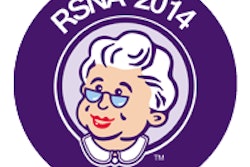The patient experience has become an increasingly important issue in healthcare, as delivery models shift from volume- to value-based. But what exactly makes a patient's imaging experience positive? The hospitality industry can offer some insights, according to research published online in the Journal of the American College of Radiology.
For patients, being treated as an individual -- rather than a medical record number -- trumped even privacy and short waiting times as a contributor to patient satisfaction, a group from MD Anderson Cancer Center's diagnostic radiology department found.
"Providing a satisfying experience for patients in a diagnostic imaging facility is less complicated than it is often perceived to be," wrote lead author Dr. Joseph Rodgers Steele and colleagues. "Our data suggest that patients prefer active listening, respect, and empathy over additional amenities and convenience."
In August 2011, Steele's group began a pilot study to identify and rank patients' needs and expectations regarding imaging procedures. The study was conducted in collaboration with the University of Houston's College of Hotel and Restaurant Management and, later, with the University of Nevada, Las Vegas' College of Hotel Administration.
The research was prompted in part by a realization that cancer patients have different needs than other patient groups, and these needs may not be captured by standard healthcare delivery surveys, the authors wrote. For example, an unemployed, single mother of two who has recently received a breast cancer diagnosis has different needs than a healthy 55-year-old man undergoing routine screening colonoscopy.
"Patient-centered care, similar to customer-centered hospitality services, is respectful of and responsive to individual patient preferences, needs, and values," Steele's group wrote. "Hospitality is considered an important component of patient satisfaction [and is] characterized by a warm and generous relationship between ... a guest and a host. Unfortunately, many patients do not experience such a warm and generous relationship but rather feel depersonalized."
For the study, the researchers used methodology also used by the hospitality industry to assess customer loyalty and guest satisfaction. The approach consisted of three steps: conducting focus groups and in-depth, one-on-one interviews with the "target population" and using the gathered information to develop a survey questionnaire; testing the survey questionnaire with a small group from the target population, including feedback about the survey itself; and distributing the survey to a large target group.
Steele and colleagues began by conducting a set of interviews with diagnostic radiology physicians to better understand the department's workflow and identify points of patient-provider or patient-staff interaction. Then, to determine which factors contribute to a positive patient experience in radiology, a second set of interviews was performed, including more than 60 hours of recorded sessions with 52 patients, 28 physicians, 10 nurses, and 23 technologists (JACR, December 19, 2014).
From these interview sets, the researchers developed a patient experience questionnaire covering 20 attributes that seemed most important to patient satisfaction. Participants who filled out the survey were asked to rank these 20 attributes on a scale of 1 to 10, with 1 being "not at all important" and 10 being "very important." Steele's group sent this survey via email in March 2012 to 30,000 randomly selected patients who had undergone a diagnostic imaging study or procedure at MD Anderson between November 2011 and January 2012.
Provider-patient disconnect?
In interviews, radiologists listed convenient scheduling, patient comfort, and prompt response to patients' questions as the top three factors for patient satisfaction. Nurses and technologists listed efficient movement through the entire imaging process as the No. 1 attribute for patient satisfaction, with treating patients as an individual rather than a "number" coming in second. But patients overwhelmingly emphasized that they wanted to be seen and treated as individuals, Steele and colleagues found.
"During the qualitative interviews, the patients self-identified their desire to be treated as a 'loved family member,' " the authors wrote. "A relationship between family members, deeper than even the provider-patient relationship, provides the support necessary to tackle the challenges that many cancer patients face."
Among the 30,000 patients invited via email to participate in the survey, 6,007 began it and 4,179 completed it, for an overall response rate of 13.9% and a completion rate of 69.5%. The 10 most important patient satisfaction attributes were as follows:
- Having physicians listen to me and acknowledge my concerns
- Being treated with respect by technologists and staff
- Being treated like a person and not like a number
- Having staff listen to me and acknowledge my concerns
- Knowing that my paperwork will be in order when I check in
- Lack of delay between my study and when I get my results
- Being informed of what is going on during my study
- Getting instructions that are easy to follow and understand after my study
- Being informed of what I need to do prior to my study (where to go, how long to fast, etc.)
- Being informed of what to expect from my study
The ease of getting a workable appointment time, a lack of delay between check-in and the study being performed, privacy during the study, and being able to meet with a radiologist to discuss results were ranked at 12, 14, 17, and 19, respectively.
"The top three attributes, as rated by patients in this study, all focused on patient-centered care," Steele and colleagues noted. "These findings were in stark contrast to our findings regarding the perceptions of providers and staff, who were more concerned about decreasing waiting times ... and improving convenience."
How can radiology departments and practices address this disconnect? Begin by offering resources and training to employees to improve their listening and empathy skills, the researchers concluded.
"Diagnostic imaging departments employ personnel with a wide variety of skill sets, many that require years to master," they wrote. "However, in making hiring decisions, many departments do not consider an individual's ability to listen, express empathy, or communicate with patients. Ensuring that providers and staff demonstrate excellent skills [in these areas] may result in higher patient satisfaction scores."



















